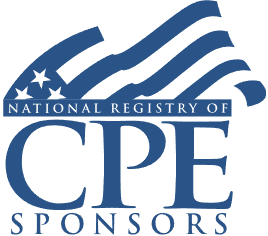Independent Contractor Federal and State Tax Issues: CA AB5, Dynamex, IRS 20-Factor Tests, Safe Harbors and Audits

Course Details
- smart_display Format
On-Demand
- signal_cellular_alt Difficulty Level
Intermediate
- work Practice Area
Corporate Tax
- event Date
Thursday, January 14, 2021
- schedule Time
1:00 p.m. ET./10:00 a.m. PT
- timer Program Length
110 minutes
-
BARBRI is a NASBA CPE sponsor and this 110-minute webinar is accredited for 2.0 CPE credits.
This course will explain federal and state criteria for determining workers' classification as either employees or independent contractors. Our panel of tax experts will discuss California AB5, the Dynamex decision, and the ABC test used by most states, as well as the IRS's 20-factor test for determining worker status.
Faculty

Mr. Howard has been in practice since 1978, offering a full range of accounting, tax, and business consulting services, as well as aggressive tax planning and tax-audit defense. Client services provided includes assisting in organization of many new businesses and representation in tax audit and controversy matters. He is Chair of CalCPA Hollywood/Beverly Hills Discussion Group Since 1986 chairing 36 programs per year on important tax, accounting and business topics. Mr Howard is a Member of Planning Committee and past speaker at UCLA Tax Controversy institute. He is past co-chair and speaker at CalCPA annual tax conference. Mr. Howard is a frequent TV, radio and newspaper media speaker and source for tax and accounting stories. He is a past part time Accounting Instructor at CSU, Dominquez Hills and part time instructor at Golden Gate University (Los Angeles Campus) Masters in Taxation program since 1999, courses taught include "S -Corp and LLC's", "Corporations II", "Taxation of Corporate Reorganizations" and "Tax Attribute Carry-Overs"; Mr. Howard's prior experience includes: five years of experience working with Big Six (Peat, Marwick, Mitchell & Co. – now KPMG); experience in charge responsibility on certified audits and preparation of financial statements for publicly held corporations, preparation of unaudited financial statements, as well as corporation and partnership tax returns.

Mr. Kampe has been practicing labor and employment law in California since 1980. He counsels and defends organizations in a wide range of labor and employment law matters, including harassment, discrimination, and retaliation claims under Title VII of the Civil Rights Act of 1964, the California Fair Employment and Housing Act, the Americans with Disabilities Act, and the Family Medical Leave Act. Mr. Kampe has extensive experience representing employers in single and multi-plaintiff employment litigation, wage and hour class action litigation, and Private Attorneys General Act claims. In addition to his litigation practice, he provides guidance to employers on federal and state compliance matters, including best practices for hiring and termination, counseling and recommendations for performance improvement, wage and hour issues, employee handbooks, workplace trainings, and separation agreements.
Description
At least 28 states have adopted some form, or portions, of the so-called ABC test--a three-pronged test for determining whether a worker is an independent contractor. The most notable, and perhaps burdensome, is California's Assembly Bill 5 (AB5), commonly referred to as the "gig worker bill," which includes per-check penalties of up to $25,000 for missclassified workers.
More disturbing than AB5 is the 2018 decision by the state's supreme court in Dynamex Op'ns West Inc. v. Superior Ct. The ruling requires companies to use the three-prong test, assumes all workers are employees unless the company can prove otherwise, and is effective retroactively.
Unlike most states, the IRS uses a 20-factor test, outlined in Revenue Ruling 87-41, to determine whether a worker is an independent contractor. The factors do not offer a bright-line test. Instead, employers must weigh all the factors and decide how to classify workers. The IRS Publication 1976, Do You Qualify for Relief Under Section 530? outlines three requirements a business can meet to qualify for safe-harbor relief from these subjective guidelines and payroll tax exposure.
In keeping with the gig economy's growth, in January 2020, the IRS launched the Gig Economy Tax Center. Simultaneously, the IRS and states continue to question and audit worker classifications. Businesses and their advisers need to understand the latest developments in worker classifications made by states and the federal government to pay workers properly and avoid substantial penalties.
Listen as our panel of veterans explains best practices for businesses struggling with worker classification and the safe harbors available to stand up to challenges and avoid payroll tax and penalty exposure.
Outline
- Federal worker classification
- Criteria
- 1099-NEC
- Federal safe-harbor relief
- Voluntary classification program
- Impending national developments
- State worker classification
- The ABC (three-prong) test
- California AB5
- Dynamex Op'ns West v. Superior Ct.
- Other state criteria
- Handling audits
- Adviser penalties
- Best practices
Benefits
The panel will review these and other critical issues:
- Key considerations for California employers of gig workers
- The 20-factor IRS determination of independent contractor status
- Adviser penalties assessed in states for giving classification advice
- The impact of Dynamex on worker classification in California
- Safe-harbor criteria for federal relief from employee classification
NASBA Details
Learning Objectives
After completing this course, you will be able to:
- Identify states that use a form of the ABC test to identify employees
- Determine specific cases where a worker in California would be considered an employee
- Decide which circumstances qualify for the federal safe harbor from employee classification
- Ascertain when new Form 1099-NEC is required
- Field of Study: Taxes
- Level of Knowledge: Intermediate
- Advance Preparation: None
- Teaching Method: Seminar/Lecture
- Delivery Method: Group-Internet (via computer)
- Attendance Monitoring Method: Attendance is monitored electronically via a participant's PIN and through a series of attendance verification prompts displayed throughout the program
- Prerequisite: Three years+ business or public firm experience preparing complex tax forms and schedules, supervising other preparers or accountants. Specific knowledge and understanding of SALT taxation, nexus and apportionment as it applies to multi-state businesses.

Strafford Publications, Inc. is registered with the National Association of State Boards of Accountancy (NASBA) as a sponsor of continuing professional education on the National Registry of CPE Sponsors. State boards of Accountancy have final authority on the acceptance of individual courses for CPE Credits. Complaints regarding registered sponsons may be submitted to NASBA through its website: www.nasbaregistry.org.
Unlimited access to premium CLE courses:
- Annual access
- Available live and on-demand
- Best for attorneys and legal professionals
Unlimited access to premium CPE courses.:
- Annual access
- Available live and on-demand
- Best for CPAs and tax professionals
Unlimited access to premium CLE, CPE, Professional Skills and Practice-Ready courses.:
- Annual access
- Available live and on-demand
- Best for legal, accounting, and tax professionals
Unlimited access to Professional Skills and Practice-Ready courses:
- Annual access
- Available on-demand
- Best for new attorneys
Related Courses

Mitigating Personal Holding Company (PHC) Tax for Franchisors and Closely Held Businesses
Thursday, June 26, 2025
1:00 p.m. ET./10:00 a.m. PT